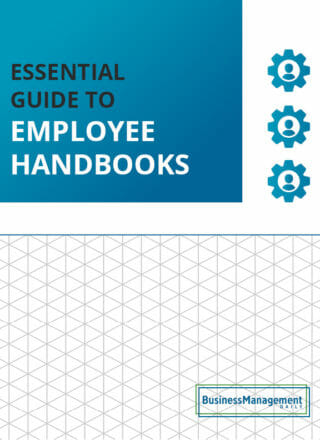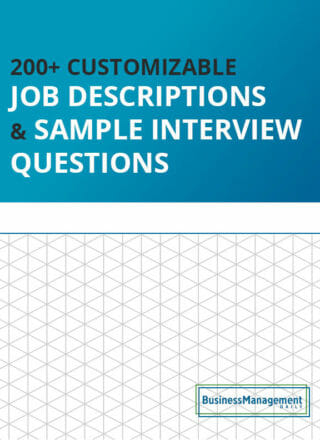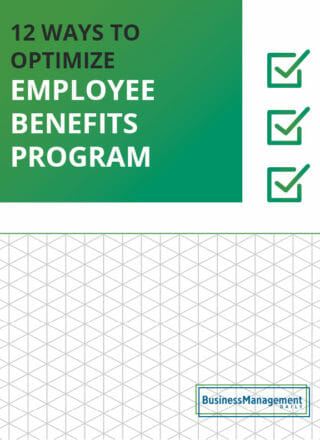How to set up a commission based plan
Why commissions are a win-win
 Would you rather be paid by the hour or by how much work you get done? A commission-based pay structure is the dream for those of the latter persuasion.
Would you rather be paid by the hour or by how much work you get done? A commission-based pay structure is the dream for those of the latter persuasion.
Commission plans are pay structures in which sales employees are rewarded based on their sales performance rather than paid outright. Some people do earn a base salary plus commission, but the main focus is to provide a per-sale return on each product that goes out the door.
Sales reps live and breathe commission. The 1:1 input-to-output ratio of commission pay makes it nice for setting goals and tracking progress, both of which motivate sales teams to keep working hard while seeing their worth to the company.
Plus, commissions are also easy to track for payroll and managers trying to meet sales goals. What’s not to like?
In this blog post, we’ll discuss how to effectively use commission plans in pay structures so everyone gets what they deserve.
Why are commission plans popular?
The word “salary” comes from the word “salt.” Salt was the primary form of commission payback in the B.C. era—you did work and got salt in corresponding amounts to trade for other necessities.
It wasn’t until the 19th century that people started earning fixed salaries, making commission pay the oldest type of pay in the working world!
So why do some people still choose the commission route over a fixed salary? Two words: earning potential.
Sales commission structures allow top performers to earn high payouts. These high payouts are linked to the amount of work they are willing to put in. In theory, the sky’s the limit. Furthermore, salespeople generally earn more than employees with fixed incomes.
As a result, this motivates ambitious individuals. These individuals may choose to forego stability. Instead, they pursue a higher commission percentage.
Employers also love commission plans since they only cost a percentage of actual monies received. This means they don’t have to pay up when business is slow.
Offering commission as a compensation structure can drive:
- Individual accountability
- Employee morale
- Transparency in earnings
- Recognition for good work
- Product consistency
The rise of gig work also increased the popularity of incentive compensation, pushing more people to work multiple jobs while removing pressure on employers to bump wages.
It’s hard to think of a more economically impactful pay structure than the commission concept.
Should you implement a commission plan?
Commissions aren’t just for sales organizations, though they appear there most often. You can offer commissions to focus on anything from customer retention to successfully boosting employee morale. Anywhere you want to see improvement, you can incentivize it through commission.
Of course, this is easier said than done. There’s no clear way to reward a customer service specialist who handles every problem quickly and without issue. That’s just part of their job, but being able to do it consistently is something everyone in their department should strive for.
To figure out what to incentivize, ask questions about company goals:
- What does our ideal outcome look like?
- How can each employee contribute to that vision?
- What positive change will help employees to achieve that vision?
- What steps are needed to get there?
- How can we incentivize taking those steps?
Once you know the change you want, finding opportunities to offer commissions is easier. You can start there and then figure out which comp plan to use.
Types of sales commission plans
Most formal sales forces operate on a commission-only salary or a base pay + commission structure. However, these aren’t the only options available. Also, how commissions are calculated can change too, as shown below.
Straight commissions
Your door-to-door vacuum salesperson works on straight commission—their bottom line is a percentage of each dollar collected for their wares. They have an incentive to sell at higher prices, even if the product can sell at a profit for cheaper.
Is this an ethical sales strategy? Uhh… no comment, but it is effective for getting people to go out, knock on doors, and dial phone numbers.
A straight commission is mainly limited to sales roles. This is because, without a sale, there’s no percentage of it to pay the salesperson.
Graduated commissions

Along with the straight commission is the graduated commission, where commission rates increase with sales volume. Nothing is more attractive for overachievers than earning a higher commission once you exceed your base sales targets.
Some companies use graduated commissions based on fixed sales quotas, while others increase commissions relative to how their sales representatives perform against one another. The latter method can create internal competition, which may or may not fit within your organizational culture.
Residual commissions
Some companies take longer to get off the ground. If funding is limited and sales commissions can’t be paid out right away, the residual commission plan can provide some cushion for revenue to generate.
Residual commissions are paid every sales cycle that customers continue paying for services. For example, say you’re a project manager who upsells a client on a package to boost SEO results.
A residual commission gets paid out each month. This happens as long as the customer continues using the service. Therefore, this encourages project managers to generate revenue. At the same time, it encourages them to provide excellent customer service.
Residual commissions are great for all kinds of teams, not just sales departments. They also increase employee retention by incentivizing people to stay with their employer rather than lose all those residual commissions.
Bonus structures
Who says no to free cash? Bonuses remain one of the best ways to incentivize employees and to do so on short notice without much of a plan. It’s great.
Offering bonuses lets managers try new ways to achieve business goals without formalizing a structure. They can target the behavior they want to see and watch how efforts to improve it unfold.
Like commissions, bonuses are paid straight or on a graduated scale. Handled 20 customer complaints today? Great job; here’s a bonus for meeting the bar. 30? Here’s that base bonus, plus more for your excellent work.
As you can see, there are plenty of adaptive sales compensation plans to choose from when building your commission structure.
Getting a commission plan up and running
Now that we’ve covered the kinds of commission structures available let’s examine how to set them up for success.
Your organization is different from others. For example, you may not agree with the Jack Welch philosophy of firing your company’s bottom 10% of achievers. You may want to grant equity to your employees in the company.
Salaries may already be high enough to opt out of an aggressive bonus structure. In short, what you incentivize and how you do it will reflect your organization’s culture.
Here are some questions to ask about how to establish a commission plan:
- Why are you considering a commission structure?
- Does the commission-based role in question need to be incentivized?
- What metrics will you use to measure the effectiveness of the commission?
Not all sales managers value an aggressive strategy. If a great salesperson spends all year schmoozing one or two quality clients but can’t get paid until they close deals, that isn’t good for the salesperson.
Conversely, you also don’t want to incentivize total sales to the point that you have many small accounts that cost more to deliver.
Your incentive structures should reward the future you want to see. If you have the means, a fixed salary can secure better talent for the long haul.
Setting targets
The trickiest part of a commission plan is figuring out what to reward. With time, what you want your staff to do and how to get there is clear. In the beginning, however, you’re going to make mistakes.
Start with whatever makes sense first. If you want sales volume, let your sales teams know there will be incentives for meeting performance metrics and a tiered commission structure for sales beyond quota.
Starting points for commissions could include:
- Number of sales
- Size and amount of sales volume
- Sales growth
- Customer retention
- Customer satisfaction
- Ongoing sales
- Referrals
While you’re at it, ask how everybody feels about the pay structure. Some employees may have ideas from a past workplace that work better than what you’re planning to do.
Monitoring progress
Make sure to periodically revisit the targets of your incentives to see how they’re helping your goals. As mentioned earlier, making mistakes is part of the goal-setting process, and being wrong can often yield more information than getting it right.
Set benchmarks and key performance indicators (KPIs), so you have some direction (here are some sample KPIs for sales teams). Then, explore what’s working and what isn’t.
There’s not much guidance here. If your incentive structure doesn’t work the way it should ask yourself if it needs more time or is fundamentally broken. Here, the only way forward is through.
Keeping commission-based staff happy
Not all work ethics respond to bonuses and incentives. Some people want reassurance that they’ll be paid on payday—during the good and bad weeks. For these folks, bonuses and commissions don’t have much effect, which can jostle managers who want to see motivation.
Some frustrated managers may respond by introducing competition (see Jack Welch’s strategy above). Only to find that this bothers employees or, worse, distracts them by introducing fears that they might not have a job tomorrow.
Here’s the key: Know who benefits from a commission-based compensation plan, and don’t be worried when some team members aren’t interested. They have plenty of capacity to continue doing good work regardless.
Find the type of commission that works best for your teams. Keep experimenting until you find it.
Additional resources:
What’s the deal with on-demand pay? ![]()
Employee handbook examples and sample policies ![]()
Act your wage: How young workers are responding to stagnant pay ![]()






